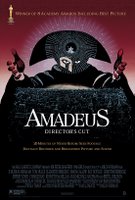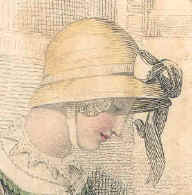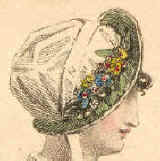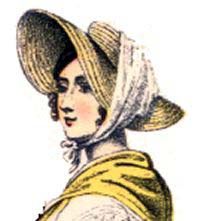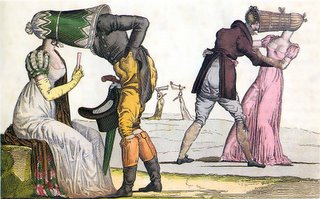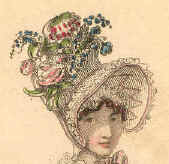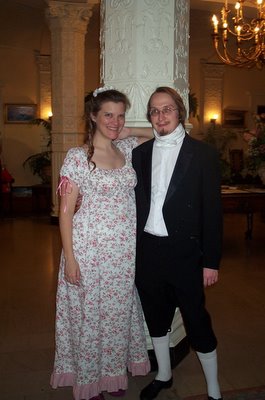Critique night for me was last night, and it was at my house,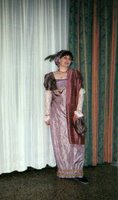
and in my case that entails quite a bit of preparation since I am not easily made “company ready.” So I spent a few hours picking up,
rushing around with this and that, and running various noisy machines, all of which had my four cats either staring at me in astonishment or running in the opposite direction. It all came together though, and we
got together, ate (an important component of our critiques), read our chapters and discussed. We always have a very good time, too—and it was late before we were finished, again usual for us, which is why we meet on Friday nights.
Well, today I am suffering from the aftereffects! I am sore, tired, and ready to write. It just happens to be a tiny bit later than usual…Ahem.
I thought I’d put up a few shots of some pictures I have on my hard drive from the Beau Monde conference I attended in 2003.
 Here is Gail Eastwood, Elena Green, and I at the evening event. I fail to remember the theme, but we attend in appropriate costume and have various activities—lessons in the card games of the period, lessons in dance (conducted by Gail Eastwood, who is knowledgeable not only of Regency dance, but of other periods as well) and the like.
Here is Gail Eastwood, Elena Green, and I at the evening event. I fail to remember the theme, but we attend in appropriate costume and have various activities—lessons in the card games of the period, lessons in dance (conducted by Gail Eastwood, who is knowledgeable not only of Regency dance, but of other periods as well) and the like.
All of these photos were taken in a closed room under artificial lighting, so it is hard to get the colors right. I did some photo editing to try to make the best of it.
Here are some shots of the dancing…and gorgeous costumes!



And some of my favorite costumes…
The flowered gown below is our Cara. The “gentleman” is Regina Scott, whose “Reginald” steals the evening.
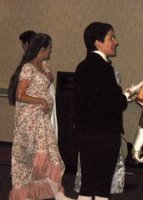
Below is a lady, whose name I unfortunately do not have, who told me that her gown (orange and gold) is made from sari material. I tried to get a better shot of her gown, but my batteries died. 🙁
 I truly love this gown. I believe she said it was made by a seamstress in India—but my memory could be failing me. It doesn’t show well in this small picture, but it is a figured material–there are tiny blue flowers all over it.
I truly love this gown. I believe she said it was made by a seamstress in India—but my memory could be failing me. It doesn’t show well in this small picture, but it is a figured material–there are tiny blue flowers all over it.

Another lovely white gown.

Please, everyone—pitch in and supply names of anyone I could not, or if I have wrongly identified anyone…thanks so much!
PS–I am wearing my Golden Heart from the previous year, and if I remember correctly, this is the year that Cara won the Beau Monde Royal Ascot contest and Ammanda won the Bookseller’s Best. Am I right?!
Laurie
LORD RYBURN’S APPRENTICE
Signet, January, 2006





